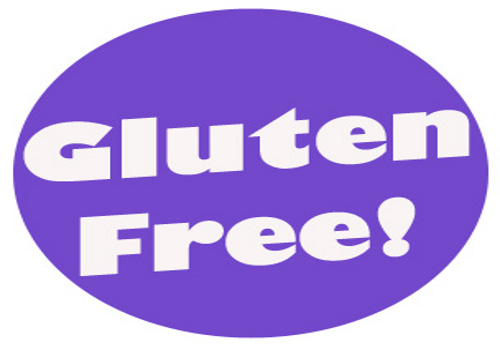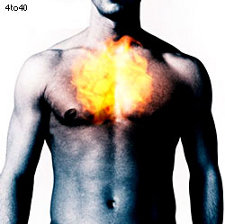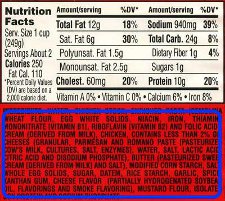 Perhaps you have been considering going gluten-free. It is a bit of a trend, after all. Some people don’t have a choice; it is a must in their lifestyles. Whether you are taking a break from wheat and gluten to rid your body of toxins, are trying to reduce your weight, or you have celiac disease, there are many ideas and recipes to your diet exciting.
Perhaps you have been considering going gluten-free. It is a bit of a trend, after all. Some people don’t have a choice; it is a must in their lifestyles. Whether you are taking a break from wheat and gluten to rid your body of toxins, are trying to reduce your weight, or you have celiac disease, there are many ideas and recipes to your diet exciting.
Beginning a gluten-free diet can be overwhelming at first. There is an exorbitant amount of information available. Take some time to sort through it and gather what you can apply. Have a good look at the causes and symptoms of wheat intolerance (which is different from a true wheat allergy). Look at these simple facts below:
- Celiac disease is generally hereditary.
- Many people with celiac disease cannot be diagnosed with a blood test.
- There is no cure for celiac disease.
- Eliminating wheat and gluten from your diet will allow your body to recover.
- Keeping gluten out of the diet will allow you to live a normal life.
- Continuing to eat gluten puts you at high risk for diabetes.
- Many products contain gluten.
Symptoms of Gluten Intolerance in Celiac Disease
Silent Celiac Disease
 People with silent celiac disease will show nearly no signs or symptoms. The small intestine still suffers and gets damaged. Long-term complications may result. This includes osteoporosis, as well as a failure to achieve normal growth rates in children.
People with silent celiac disease will show nearly no signs or symptoms. The small intestine still suffers and gets damaged. Long-term complications may result. This includes osteoporosis, as well as a failure to achieve normal growth rates in children.
Minor Celiac Disease
Minor symptoms occur with those who have minor celiac disease. They are most usually intermittent and often not seen a being related to diet or digestive symptoms.
They can include:
- indigestion
- mild abdominal pain
- bloating
- changes in bowel movements, i.e. bouts of diarrhea or constipation
- anemia
- loss of appetite
- loss of weight
- tingling and numbness, generally in the hands and feet
- vomiting
- loss of hair
Major Celiac Disease
People affected by major celiac disease will often suffer from the above symptoms as well as those listed below. They may also experience symptoms that are more severe, caused by the digestive system being unable to digest food. This happens because, over time, the intestinal wall has broken down. Toxins and waste begin to absorb into the system, but not the nutrients needed by the body to operate optimally.
When gluten enters the system, celiacs cannot digest it because they lack the enzyme that breaks it down. The gluten works its way out the of digestive tract like broken glass, cutting its way through. If it sounds horrible, that’s because it is. That is why people with gluten intolerance suffer so much after eating it. The effects last for days at minimum, and for a lifetime if left untreated.
Symptoms may include:
- diarrhea, which can be sudden
- incontinence
- weight gain
- irritable bowel
- muscle spasms
- swelling in your hands and feet, arms and legs
- blood in the stool
- yeast infections
- severe gas
- foot pain
- eye tics or facial tics
- welts like hives
- blurred vision
- insomnia or sleeping inconsistencies
- bone or joint pain
- seizures
- infertility
- pales sores in the mouth
Try an Elimination Diet
If you have many of the symptoms above, go a few weeks without putting any gluten into your system. See if the symptoms reverse. If they do, then it is strongly recommended that you avoid consuming it altogether. Alternatively, have your blood tested before you stop eating gluten. This is the only way your antibodies will appear high. If a person waits to be tested until they have eliminated gluten from their system, generally, the result will be negative.
Researchers continue to do studies to see if they can discover commonality in the degrees of suffering among celiacs. Celiac disease seems to appear randomly and affect everyone at different levels. Some people cannot self-diagnose gluten as being the culprit because the symptoms make it appear to be a different problem.
People diagnosed with fibromyalgia, irritable bowel syndrome (IBS) and chronic fatigue syndrome (CFS) are strongly encouraged to try an elimination diet to see if they begin to experience relief. This will need to continue for weeks if not months, depending on the severity and length the condition has gone on.
Reading Product Labels Will Help Identify Which Products Contain Gluten
 It will be necessary to read the labels on every product you purchase for consumption. An overwhelming amount of foods contain wheat and gluten. This includes sauces, frozen foods, processed foods, ice cream, and cereal. Some people with celiac disease are aggravated after eating oats and rice or potatoes, which do not contain gluten but are often cross-contaminated.
It will be necessary to read the labels on every product you purchase for consumption. An overwhelming amount of foods contain wheat and gluten. This includes sauces, frozen foods, processed foods, ice cream, and cereal. Some people with celiac disease are aggravated after eating oats and rice or potatoes, which do not contain gluten but are often cross-contaminated.
Eating gluten-free products can be a bore, and it can be costly; but it doesn’t have to be. There are many books on the market and recipes available to start you off. Educate yourself. Understand that some people with celiac disease or who are sensitive to gluten are also sensitive to yeast and products that contain yeast.
Again, this is overwhelming. Almost anything you purchase will seem to contain either gluten or yeast, if not both. If you suspect you have a gluten intolerance, give the list of symptom below a glance. Many people, perhaps as many as one out of seven in the US, go undiagnosed. Since blood tests frequently do not confirm celiac disease, the best way to test is to undertake an elimination diet.
There is a supplement called Gluten-Zyme which may help people who feel they must have gluten occasionally. It is meant to be used before consuming a food containing gluten. As with all supplements, it works for some people but certainly not for all. If you choose to give it a shot, be sure to take note of your symptoms!
Enjoying Gluten-Free Foods
 While it can be difficult to refuse a delicious smelling roll, fresh pizza, homemade pastries and such, it is promising to know that one can begin to recover and feel better just by keeping gluten out of her diet.
While it can be difficult to refuse a delicious smelling roll, fresh pizza, homemade pastries and such, it is promising to know that one can begin to recover and feel better just by keeping gluten out of her diet.
Many people buy alternative grains and grind them into flours. Eliminating yeast and replacing it with a teaspoon of vinegar, guar or xanthan gum and a tablespoon of baking soda can produce many pleasant flat breads that even people that can tolerate gluten will want to eat. Cookies, muffins and cakes are easy and fun to make with alternative flours.
It is a hopeful cure, so to speak, a good alternative. Speaking of alternative, there are some luscious products on the market now as celiac disease continues to be studied and understood. You will find lasagna, pasta, brownies and muffins, pizza bases, crackers, cookies, ice cream, even blueberry waffles. Better yet, make your own from scratch with alternative ingredients. Some restaurants even offer a gluten-free column on their menu!
In the wonderful US of A you have an unlimited opportunity to be a gluten-free glutton (although this is not encouraged…)!
http://www.nhs.uk/Conditions/Coeliac-disease/Pages/Symptoms.aspx
http://www.medic8.com/healthguide/articles/coeliacdisease.html